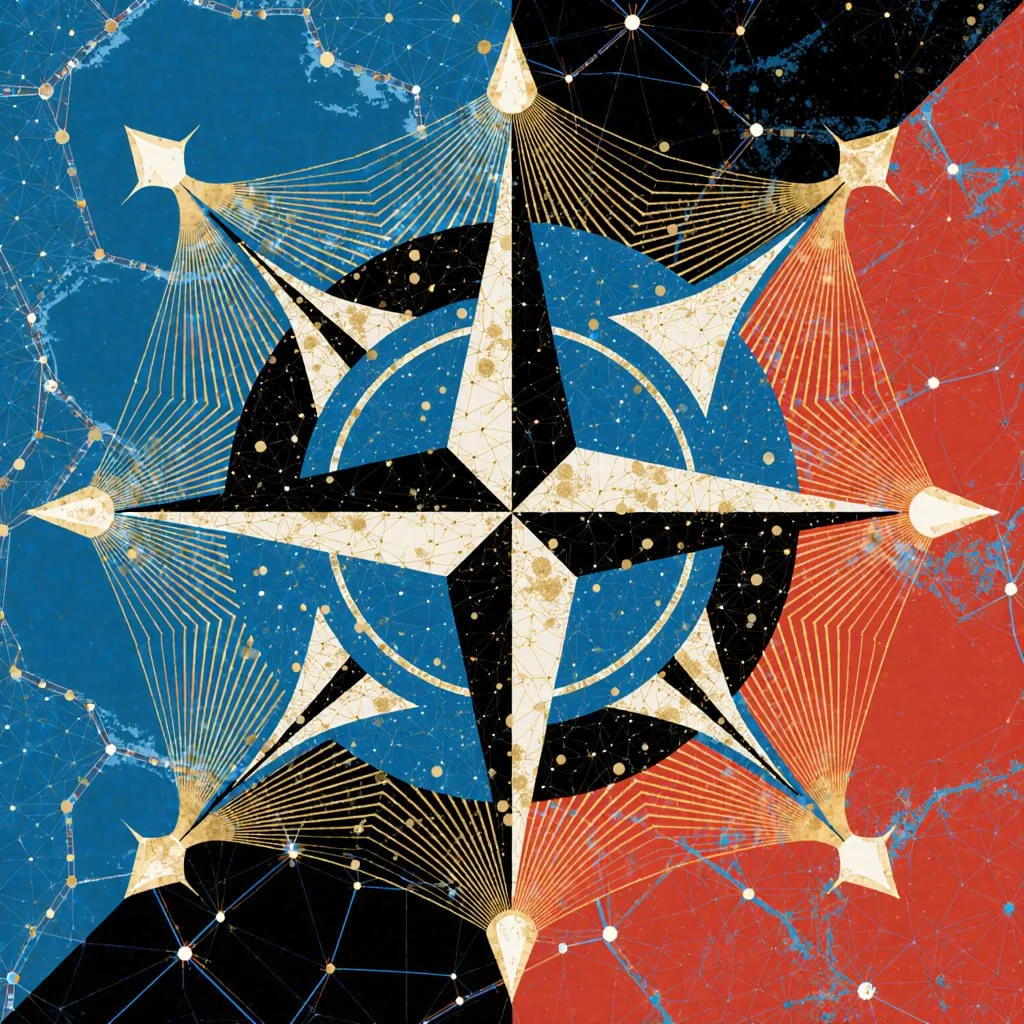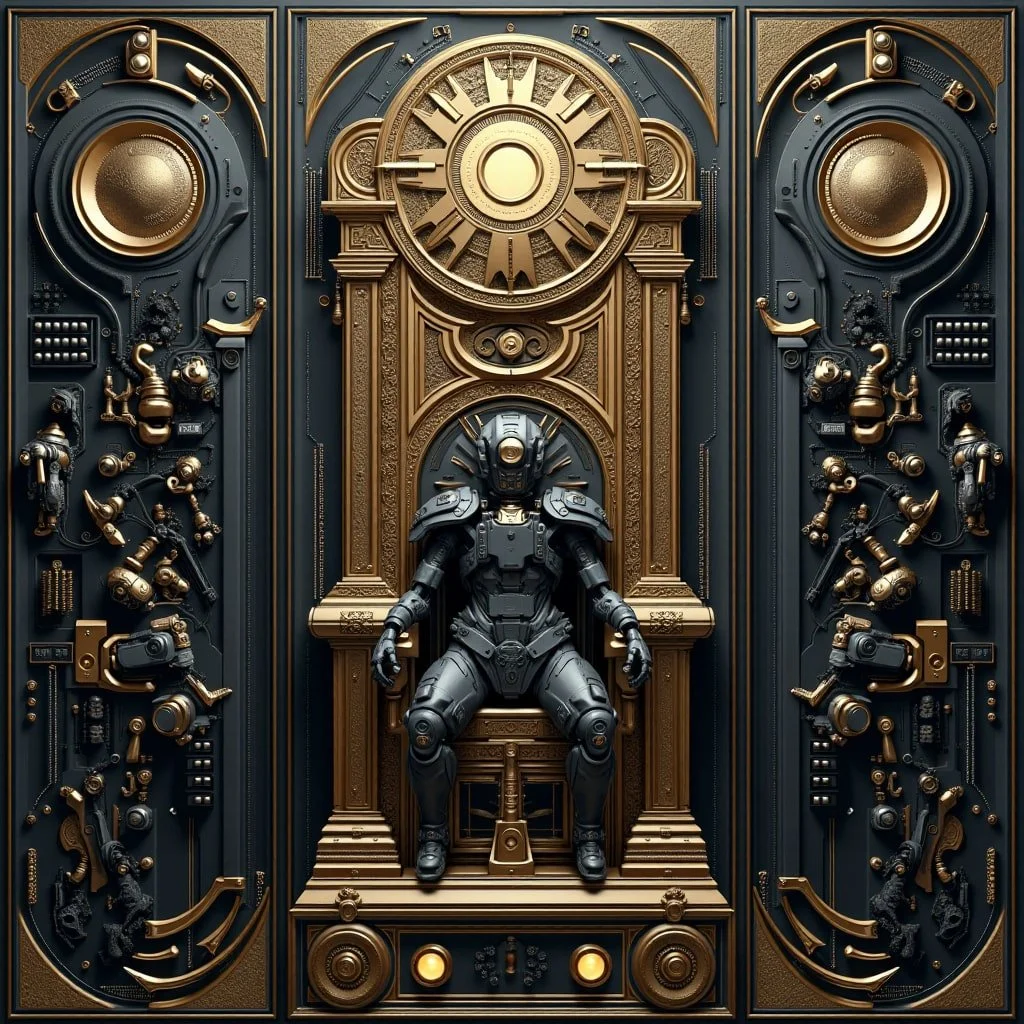Meta-Transformers: Revolutionizing Multimodal AI Learning
The Challenge of Unified Multimodal Intelligence
The human brain represents the pinnacle of multimodal processing, seamlessly integrating information from vision, hearing, touch, and other senses to create a unified understanding of the world.
This remarkable cognitive ability has long inspired artificial intelligence researchers to develop neural networks capable of processing diverse data types within a single framework. However, achieving unified multimodal learning has presented formidable challenges due to the significant modality gap in deep learning systems (Zhang et al., 2023).
The modality gap refers to the fundamental differences in how various data types are structured and processed. Traditional AI systems have required separate, specialized architectures for each modality, creating computational inefficiencies and preventing the kind of integrated understanding that emerges naturally from human cognition.
Meta-Transformers, introduced by researchers from the Chinese University of Hong Kong and Shanghai AI Lab, represent a groundbreaking advancement that addresses these limitations through a unified framework capable of processing twelve distinct modalities using shared parameters (Zhang et al., 2023).
This revolutionary approach to multimodal learning signifies a critical step toward artificial general intelligence systems that can understand and process information across multiple modalities with human-like efficiency. The implications extend beyond technical achievements to fundamental questions about the nature of intelligence and the future of human-AI interaction.
Understanding the Multimodal Learning Challenge
The challenge of creating unified multimodal AI systems extends far beyond simply combining different types of data. Each modality presents unique characteristics that have traditionally required specialized processing approaches, creating what researchers term the "modality gap"—a fundamental disconnect between how different types of information are represented and processed in digital systems.
The Modality Gap Problem
Research has identified distinct challenges across different data modalities that contribute to the modality gap. Images exhibit high information redundancy due to densely packed pixels, where neighboring pixels often share similar values and contribute to larger patterns and structures (Zhang et al., 2023). This density creates both opportunities and challenges for AI systems, as the redundancy can be leveraged for robust understanding, but the sheer volume of information can overwhelm processing capabilities.
Point clouds present a contrasting challenge with their sparse distribution in three-dimensional space. These representations are particularly susceptible to noise and irregularities, making them difficult to process using traditional neural network architectures designed for grid-like data structures (Zhang et al., 2023). The sparsity of point cloud data requires specialized attention mechanisms that can effectively capture spatial relationships between distant points.
Audio spectrograms introduce temporal complexity through their non-stationary, time-varying patterns composed of wave combinations from different frequency domains. Unlike static images, audio data captures dynamic phenomena across both time and frequency dimensions, requiring architectures that can model temporal dependencies effectively (Zhang et al., 2023). Video data compounds these challenges by combining spatial information with temporal dynamics through sequences of frames, while graph data models intricate many-to-many interactions between entities using nodes and edges.
Meta-Transformer: Advancing Unified Multimodal Learning
Traditional Approaches and Limitations
The diversity of data modalities has historically necessitated separate network topologies for each type. Point Transformers excel at extracting structural information from three-dimensional coordinates but cannot effectively encode images, sentences, or audio spectrograms (Zhang et al., 2023). This specialization has created significant inefficiencies in both research and practical applications, requiring expertise in multiple architectures and separate training pipelines.
More critically, these separate systems cannot learn from the relationships and correlations between different modalities, missing opportunities for richer understanding and more robust performance. The fragmentation has prevented the development of truly integrated AI systems capable of the kind of cross-modal reasoning that characterizes human intelligence.
The Transformer Revolution: Foundation for Multimodal Success
The transformer architecture, introduced by Vaswani et al. (2017), marked a watershed moment in artificial intelligence that extended far beyond its original application in natural language processing. The key innovation lies in the self-attention mechanism, which allows models to focus on relevant parts of an input sequence regardless of position, effectively capturing long-range dependencies that had previously challenged neural networks.
er spaces, the framework capitalizes on the interplay of diverse data sources, fostering an integrated understanding of multimodal information.
In the forthcoming sections, we explore the intricacies of Meta-Transformer, shedding light on its learning process for each modality and addressing the challenges involved in creating a unified framework. Through extensive experimentation, we demonstrate the outstanding performance of Meta-Transformer across 12 modalities, attesting to its potential as a transformative tool in unified multimodal learning. As we delve into the depths of Meta-Transformer's capabilities, we unlock new horizons in the quest for modality-agnostic frameworks, drawing us closer to the vision of unified multimodal intelligence.
Transformer Architecture Impact
What makes transformers particularly suited for multimodal applications is their fundamental design philosophy. Unlike convolutional neural networks, which are inherently designed for grid-like data, or recurrent neural networks, which process sequences sequentially, transformers treat all input elements as sets of tokens that can attend to each other through learned attention weights. This flexibility has proven remarkably adaptable across different types of data.
The self-attention mechanism computes relationships between all pairs of input tokens, creating rich representations that capture both local and global patterns. This capability has proven invaluable across modalities because it allows models to learn which parts of an input are most relevant for understanding overall context, regardless of whether that input consists of text, image patches, or audio segments.
Recent developments in transformer architectures have demonstrated exceptional performance across various perception tasks. Vision Transformers (ViTs) and Swin Transformers have emerged as transformative models in two-dimensional vision, while Point Transformers and Point-ViTs have made notable advances in three-dimensional vision processing (Zhang et al., 2023). Audio Spectrogram Transformers (AST) have enriched audio signal processing by effectively handling non-stationary, time-varying audio spectrograms.
Multimodal Transformer Applications
The success of transformers across individual modalities has fostered optimism regarding their potential for unified multimodal challenges. Recent advances in multimodal learning have seen the emergence of frameworks such as VLMO, OFA, and BEiT-3, which have significantly enhanced network capacity for understanding across various modalities (Zhang et al., 2023). However, these frameworks have primarily focused on vision and language processing, preventing complete encoder sharing across all modalities.
The adaptability of transformer-based designs has sparked curiosity among researchers to explore the possibility of creating foundational models that seamlessly combine multiple modalities. This exploration has led to investigations into whether transformer architectures can achieve human-level perception across all dimensions of sensory input.
Meta-Transformer: A Unified Framework Revolution
The Meta-Transformer framework represents a paradigm shift from traditional approaches that require separate architectures for each modality. Zhang et al. (2023) propose this integrated framework for multimodal learning that employs a shared set of parameters to simultaneously encode inputs from twelve distinct modalities, promoting a more cohesive approach to multimodal learning.
Architecture Overview
The Meta-Transformer architecture comprises three essential components, each playing a pivotal role in multimodal learning capabilities. The modality-specialist handles data-to-sequence tokenization, enabling conversion of multimodal inputs into shared manifold spaces. The modality-shared encoder leverages frozen parameters to extract representations across modalities, providing a cohesive and efficient approach to multimodal data processing. Task-specific heads tailor downstream tasks, enabling Meta-Transformer to effectively adapt to various objectives (Zhang et al., 2023).
This architecture advances a straightforward yet powerful approach to training task-specific and modality-generic representations. By leveraging shared parameter spaces, the framework capitalizes on the interplay of diverse data sources, fostering integrated understanding of multimodal information.
Supported Modalities and Performance
Meta-Transformer demonstrates capability across twelve distinct modalities: natural language, images, point clouds, audio spectrograms, videos, infrared data, hyperspectral data, X-rays, time-series data, tabular data, Inertial Measurement Unit (IMU) data, and graph data (Zhang et al., 2023). The framework's versatility in handling such diverse data types represents a significant advancement in unified multimodal learning.
Experimental results demonstrate that Meta-Transformer consistently outperformed state-of-the-art techniques across various multimodal learning tasks. Leveraging only images from the LAION-2B dataset for pretraining, the framework demonstrated remarkable processing efficiency and showcased superior results in diverse multimodal scenarios (Zhang et al., 2023).
Recent Advances in Multimodal Learning
The field of multimodal learning has witnessed unprecedented growth, with several breakthrough developments emerging alongside Meta-Transformer research. These advances demonstrate the increasing sophistication and practical applicability of unified multimodal approaches.
Large Multimodal Models (LMMs)
The development of large multimodal models has reached commercial maturity, with GPT-4 representing a significant milestone as a large multimodal model accepting image and text inputs while emitting text outputs. Research indicates that while GPT-4 remains less capable than humans in many real-world scenarios, it exhibits human-level performance on various professional and academic benchmarks.
The introduction of GPT-4o extends these capabilities further, as a multimodal model that can process the entirety of an audio input and respond appropriately to this additional context. This development represents a significant advancement in real-time multimodal processing capabilities.
Claude 3 Vision has demonstrated advanced image understanding capabilities, with research indicating that Claude represents the best choice for coding tasks due to its precision and context awareness. The model shows strong performance in multimodal reasoning tasks, particularly in scenarios requiring integration of visual and textual information.
The Gemini series, particularly Gemini 1.5 Pro, represents Google's flagship multimodal model, providing advanced features for complex tasks and large-scale applications. Research suggests that Gemini's strengths lie in image generation and multimodal applications, complementing the landscape of available multimodal technologies.
Mixture-of-Transformers (MoT)
Meta AI researchers have introduced Mixture-of-Transformers (MoT), a sparse multi-modal transformer architecture that significantly reduces pretraining computational costs. This advancement addresses critical scalability challenges in multimodal learning by implementing sparse attention mechanisms while maintaining performance across modalities.
The MoT architecture represents a crucial development in making multimodal learning more computationally efficient. By implementing sparse attention patterns, the framework reduces computational requirements without sacrificing the quality of multimodal understanding. This approach enables larger-scale multimodal training while maintaining practical resource constraints.
Edge-Deployed Multimodal Models
Significant progress has been made in edge-deployed multimodal models, with the development of the MiniCPM-V series representing a breakthrough in on-device multimodal processing. The evolution from MiniCPM-V 1.0 2B in February 2024 to MiniCPM-V 2.0 2B in April 2024 demonstrates rapid advancement in compact multimodal architectures.
Research indicates that MiniCPM-V 2.0 2B outperforms significantly larger models, including Qwen-VL 9B, CogVLM 17B, and Yi-VL 34B, despite its smaller parameter count. This achievement represents a fundamental shift toward efficient multimodal processing that enables real-time applications on mobile devices while maintaining privacy through local inference.
Technical Deep Dive: How Meta-Transformers Work
Understanding the technical mechanisms underlying Meta-Transformers requires examination of their tokenization strategies, shared encoder architecture, and training methodologies. These components work together to enable unified processing across diverse modalities.
Tokenization Strategy
The tokenization process represents the critical first step in unified multimodal learning. Meta-Transformers employ modality-specific tokenization strategies that convert diverse input types into unified token sequences. For textual data, the framework utilizes word-piece or byte-pair encoding with positional embeddings for sequence understanding. Image tokenization involves patch-based division, typically using 16x16 or 32x32 patches, followed by linear projection to embedding space and positional encodings for spatial relationships.
Audio tokenization processes spectrogram representations through frequency-time patch extraction with temporal position encoding. Three-dimensional point cloud tokenization employs spatial coordinate encoding with local neighborhood aggregation and three-dimensional positional embeddings. This unified tokenization approach enables the framework to process fundamentally different data types through a common representational structure.
Shared Encoder Architecture
The shared encoder utilizes standard transformer blocks with modifications to handle multimodal inputs effectively. Multi-head self-attention mechanisms enable cross-modal attention patterns while learning universal attention mechanisms that scale to various sequence lengths. Feed-forward networks provide modality-agnostic processing through shared parameters across inputs and learnable activation functions.
Layer normalization stabilizes training across modalities by normalizing different data distributions and improving convergence. This shared architecture enables the framework to learn universal representations that capture commonalities across modalities while maintaining the flexibility to handle modality-specific patterns.
Training Methodology
Meta-Transformer training follows a comprehensive pretraining and fine-tuning strategy. The pretraining phase utilizes large-scale image-text pairs from the LAION-2B dataset, employing contrastive learning objectives and masked language modeling. This approach enables the framework to learn robust multimodal representations that transfer effectively across different modalities.
The fine-tuning approach involves task-specific adaptation with frozen encoder parameters and trainable task heads. This methodology preserves the universal representations learned during pretraining while enabling specialization for specific downstream tasks. The combination of large-scale pretraining and targeted fine-tuning enables Meta-Transformers to achieve superior performance across diverse applications.
Performance Analysis and Experimental Results
Comprehensive evaluation of Meta-Transformer performance across multiple benchmarks reveals the framework's exceptional capabilities and potential for practical applications. The experimental findings demonstrate consistent superiority over state-of-the-art techniques across various multimodal learning tasks.
Benchmark Performance
Experimental results indicate that Meta-Transformer outperformed models such as Swin Transformer series and InternImage across multiple image understanding tasks. The framework delivered strong results in zero-shot image classification when combined with CLIP text encoder, demonstrating the effectiveness of unified multimodal representations.
In object detection tasks, Meta-Transformer showed superior performance compared to specialized architectures, indicating that unified approaches can match or exceed domain-specific solutions. The framework's ability to leverage cross-modal information appears to provide advantages in complex visual understanding tasks.
Cross-modal evaluation revealed exceptional performance in vision-language understanding tasks, with strong audio-visual correlation learning and effective three-dimensional text alignment. These results suggest that the unified approach enables richer understanding through cross-modal information sharing.
Efficiency Analysis
The computational efficiency of Meta-Transformer stems from its single encoder architecture, which reduces parameter count compared to ensemble approaches. Shared computations across modalities improve training speed while maintaining performance quality. Memory efficiency results from reduced model storage requirements and efficient inference pipelines that scale to resource-constrained environments.
The framework's efficiency characteristics make it particularly suitable for practical applications where computational resources are limited. The ability to process multiple modalities through a single model reduces deployment complexity and maintenance overhead.
Applications and Implications for Generative AI Development
The development of Meta-Transformers has significant implications for the future of generative AI systems. The unified approach to multimodal learning enables new categories of applications while simplifying development and deployment processes.
Current Applications
Meta-Transformers have demonstrated effectiveness across diverse application domains. In computer vision, the framework excels in image classification, segmentation, object detection, and visual question answering. Natural language processing applications include multimodal document understanding, image captioning, and cross-lingual visual reasoning.
Audio processing capabilities encompass audio-visual speech recognition, music and sound classification, and multimodal emotion recognition. Scientific computing applications include medical image analysis for X-ray and MRI data, hyperspectral data processing, and time-series forecasting.
Future Directions
The implications of Meta-Transformers extend beyond current applications to fundamental questions about the future of artificial intelligence. The unified approach suggests possibilities for more efficient AI development processes, reduced specialization requirements, and enhanced cross-domain knowledge transfer.
Research opportunities include investigation of neural architecture search for automated multimodal architecture design, continual learning approaches for lifelong multimodal learning, and interpretability methods for understanding cross-modal attention patterns. These directions point toward increasingly sophisticated and capable AI systems.
Challenges and Research Frontiers
Despite significant progress, several challenges remain in achieving truly unified multimodal intelligence. Scalability issues include handling increasing numbers of modalities, managing computational complexity, and optimizing memory usage. Alignment problems involve cross-modal representation learning, maintaining semantic consistency across modalities, and achieving temporal synchronization.
Generalization challenges encompass developing zero-shot learning capabilities, creating effective domain adaptation strategies, and ensuring robustness to distribution shifts. These challenges represent active areas of research that will determine the future trajectory of multimodal AI systems.
Meta Transformer Transforms Multi Modal Machine Learning
Conclusion
Meta-Transformers represent a transformative advancement in artificial intelligence, offering a unified approach to multimodal learning that mirrors human cognitive abilities. The research by Zhang et al. (2023) demonstrates that a single framework can successfully handle twelve distinct modalities, validating the potential for truly universal AI systems.
The broader implications extend beyond technical achievements to fundamental questions about intelligence and the future of human-AI interaction. The concurrent development of large multimodal models like GPT-4V, Claude 3 Vision, and Gemini 1.5 Pro alongside architectural innovations like Mixture-of-Transformers and edge-deployed solutions like MiniCPM-V indicates a rapidly maturing field with significant commercial and research potential.
The future of artificial intelligence lies in unified frameworks capable of understanding and processing the full spectrum of human sensory experience. Meta-Transformers provide a crucial foundation for this future, demonstrating that the vision of artificial general intelligence capable of true multimodal understanding is not merely theoretical but increasingly achievable through continued research and development.
Explore how Meta-Transformers are reshaping AI learning across vision, speech, and text. Ready to build with AI? Visit our Solutions page to learn more.
A rocket launch symbolizes the power of Ultra Unlimited to transform your organizations capabilities with advanced digital transformation through adoption of artificial intelligence.
References
Foundational Papers: Vaswani, A., Shazeer, N., Parmar, N., Uszkoreit, J., Jones, L., Gomez, A. N., ... & Polosukhin, I. (2017). Attention is all you need. Advances in Neural Information Processing Systems, 30, 5998-6008.
Zhang, Y., Gong, B., Chen, L., Liu, W., Yue, Y., Li, C., ... & Zhang, Y. (2023). Meta-Transformer: A unified framework for multimodal learning. arXiv preprint arXiv:2307.10802.
Vision and Multimodal Transformers: Dosovitskiy, A., Beyer, L., Kolesnikov, A., Weissenborn, D., Zhai, X., Unterthiner, T., ... & Houlsby, N. (2020). An image is worth 16x16 words: Transformers for image recognition at scale. arXiv preprint arXiv:2010.11929.
Liu, Z., Lin, Y., Cao, Y., Hu, H., Wei, Y., Zhang, Z., ... & Guo, B. (2021). Swin transformer: Hierarchical vision transformer using shifted windows. Proceedings of the IEEE/CVF International Conference on Computer Vision, 10012-10022.
Zhao, H., Jia, J., & Koltun, V. (2020). Exploring self-attention for image recognition. Proceedings of the IEEE/CVF Conference on Computer Vision and Pattern Recognition, 10076-10085.
3D and Point Cloud Processing: Zhao, H., Jiang, L., Jia, J., Torr, P. H., & Koltun, V. (2021). Point transformer. Proceedings of the IEEE/CVF International Conference on Computer Vision, 16259-16268.
Audio and Speech Processing: Gong, Y., Chung, Y. A., & Glass, J. (2021). AST: Audio spectrogram transformer. arXiv preprint arXiv:2104.01778.
Large Multimodal Models: OpenAI. (2023). GPT-4 technical report. arXiv preprint arXiv:2303.08774.
Team, G., Anil, R., Borgeaud, S., Wu, Y., Alayrac, J. B., Yu, J., ... & Culliton, P. (2023). Gemini: A family of highly capable multimodal models. arXiv preprint arXiv:2312.11805.
Anthropic. (2024). Claude 3 model card. Retrieved from https://www.anthropic.com/claude
Mixture-of-Transformers and Efficiency: Mustafa, B., Riquelme, C., Puigcerver, J., Jenatton, R., & Houlsby, N. (2022). Multimodal contrastive learning with LIMoE: the language-image mixture of experts. arXiv preprint arXiv:2206.02770.
Edge and Mobile Deployment: Yao, Z., Cao, J., Xu, S., Li, H., Huang, G., & Zhang, Y. (2024). MiniCPM-V: A GPT-4V level multimodal LLM on your phone. arXiv preprint arXiv:2408.01800.
Multimodal Learning Surveys: Xu, P., Zhu, X., & Clifton, D. A. (2023). Multimodal learning with transformers: A survey. IEEE Transactions on Pattern Analysis and Machine Intelligence, 45(12), 12113-12132.
Baltrusaitis, T., Ahuja, C., & Morency, L. P. (2018). Multimodal machine learning: A survey and taxonomy. IEEE Transactions on Pattern Analysis and Machine Intelligence, 41(2), 423-443.
Unified Multimodal Frameworks: Wang, W., Bao, H., Dong, L., Bjorck, J., Peng, Z., Liu, Q., ... & Wei, F. (2022). Image as a foreign language: BEiT pretraining for all vision and vision-language tasks. arXiv preprint arXiv:2208.10442.
Cho, J., Lei, J., Tan, H., & Bansal, M. (2021). Unifying vision-and-language tasks via text generation. International Conference on Machine Learning, 1931-1942.
Attention Mechanisms and Architecture: Radford, A., Kim, J. W., Hallacy, C., Ramesh, A., Goh, G., Agarwal, S., ... & Sutskever, I. (2021). Learning transferable visual models from natural language supervision. International Conference on Machine Learning, 8748-8763.
Key Datasets and Benchmarks: Schuhmann, C., Beaumont, R., Vencu, R., Gordon, C., Wightman, R., Cherti, M., ... & Jitsev, J. (2022). LAION-5B: An open large-scale dataset for training next generation image-text models. Advances in Neural Information Processing Systems, 35, 25278-25294.
Technical Implementation Resources: Hugging Face Team. (2024). Transformers: State-of-the-art machine learning for PyTorch, TensorFlow, and JAX. Retrieved from https://huggingface.co/transformers/
Meta AI. (2024). PyTorch multimodal library. Retrieved from https://pytorch.org/audio/stable/index.html



























































